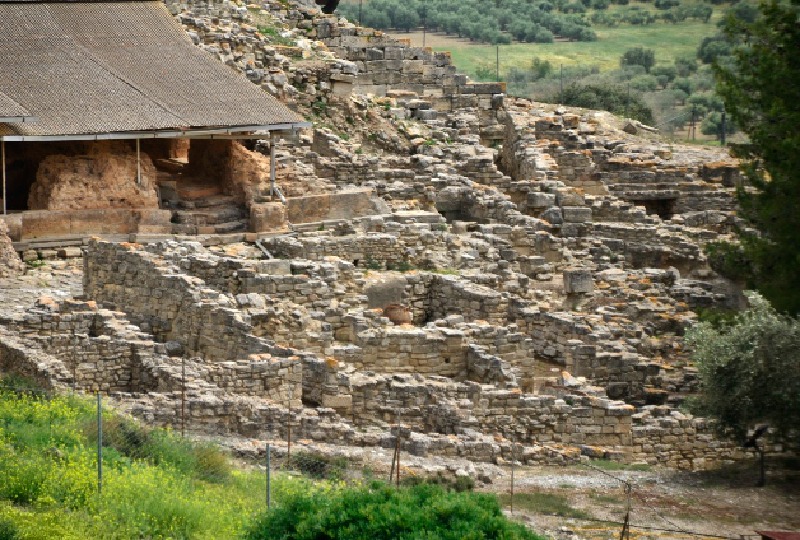A beginner’s guide to driving in Greece

We headed south to the high parts of Crete. We were slowly increasing in height when we came to a village. We turned right and then got confused before retracing and heading off in a different direction. This scenario was played out a few times as we climbed higher, bearing in mind this island goes from sea level to over 2,000 metres in the space of 25-35 kms. Driving in Greece, as any Aussie who has done it will tell you, is different. I thought I’d lay out a few basics of what to expect, mainly pertaining to Crete.
1. How to park
Pull up, switch your engine off, get out of your car. It’s that simple. Any signs or regulations may be ignored, however, if you happen to be double or triple parked, it is considered polite to switch your emergency blinkers on.
2. Overtaking
Only in the event of you being in a one-lane village should you not overtake. There’s probably not quite enough room, though, judging from all the side panel dings we noted. Although, many have tried. While driving along a two-lane highway with two unbroken lines down the middle, it is normal to overtake. I know I did it while someone was overtaking a bus from the opposite direction. Hey, it worked for me.
Read more: A captivating love story from ancient Greece
3. Road directional signs
The place you are going to doesn’t have a sign on the roadside. It is (a) nonexistent; (b) covered by spring growth; (c) the arrow has been vandalised; (d) it’s written in traditional Greek, which you don’t understand; (e) it’s tucked out of sight just down the road you were supposed to turn down.

4. Road maps
They are not up-to-date. How silly of you for thinking they would be. Towns that you expect to be on your right may be on your left. The spelling on the map does not correspond to the spelling on the road signs. It was not uncommon for the English version to be spelt three different ways.
5. Main roads
Just because you’re experiencing wide two-lane momentary bliss doesn’t mean it won’t be a tangled, cobbled, one-lane mess in the next village around the corner.
6. Pedestrians
Ignore them, they expect it, even when they’re in the middle of a marked crossing. The exception is Greek mammas all dressed in black in the villages. They may walk out in front of you with their back turned. It’s a sort of dare.

7. Speed limits
There are limits. Hey, why didn’t somebody tell me what those signs were? Besides, had I obeyed them I would have been run over, and I didn’t want to risk that.
8. Roadwork signs
They have road work signs? Someone forgot to tell them they’re in the storeroom.
Read more: My first days in stunning Crete
9. Care whilst driving
You mean you haven’t tried driving along with your arm loosely swinging out the window or actively phoning a friend? If it’s good enough for the police, then it’s good enough for you!
10. Country Roads
Around every corner there’s a tractor, a very slow scooter, a herd of sheep or an unexpected nasty bump. Many of the above contributed to our worst day whilst heading south into the mountains on our first day in Crete. Signage was appallingly bad and our out-of-date map contributed to our being lost for two to three hours, arriving at Festos (according to the signs – Phaestos or Phaistos according to our guide book and maps) apparently too late to visit as it shut at 3pm.

By the time we reached Matala on the southern coast there was only time for a late lunch overlooking this pretty beach with the unusual headland dotted with caves that had been used for Roman burials and, later, accommodation for cave dwellers. Just over the hill is Komos, reputedly Crete’s whitest beach (Australia has nothing to worry about) with an enticing Bunga Bunga bar, an interesting small Minoan site and little else.

On the way home we found Festos was actually open till 8pm so we stopped and had a look at this spectacularly sited Minoan town, one of the most important centres of Minoan civilization, and the most wealthy and powerful city in southern Crete. It was inhabited from the Neolithic period until the foundation and development of the Minoan palaces in the 15th century B.C.
The city covered a considerable area around the palatial centre. After the destruction of the palace in the 15th century, the city continued to be inhabited in the Mycenaean and Geometric periods until the 8th century B.C.
We then found the speedy way home, chopping three hours off our morning journey, much to Lorraine’s pleasure.








 Proudly Australian owned and operated
Proudly Australian owned and operated